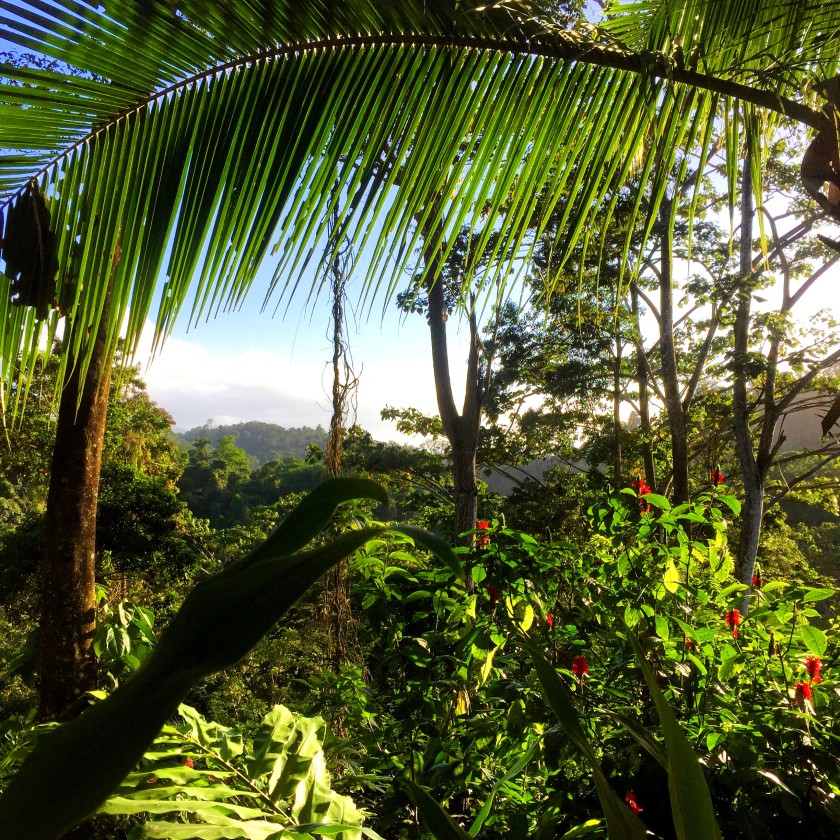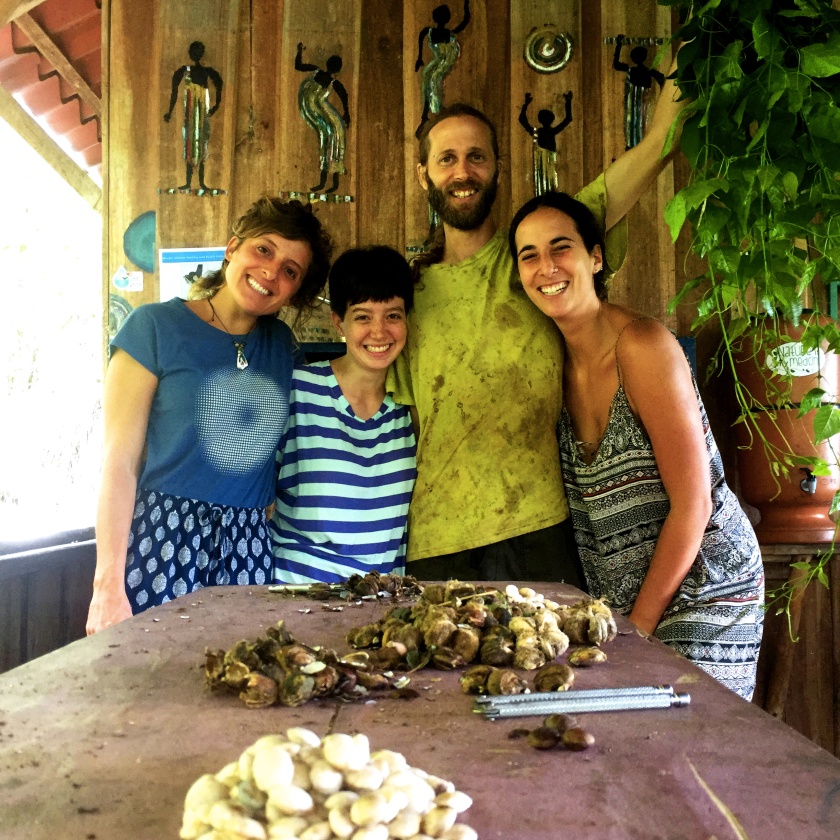Nestled in the hills overlooking Puerto Viejo is the Finca Inti. A lush and productive jungle, on the Caribbean coast of Costa Rica, where I lived for 2 weeks with Tristan, his wife, their daughter, their 3 dogs and 2 cats.
Lesson 1: Observation
In the open kitchen, there are bananas suspended, fresh hairy rambutans, wooden star-shaped nuts, and books about plants, food and spirituality.
Tristan is an ex-surfer from Bordeaux, converted into a farmer, picker, shaman. He narrates how they bought this land 12 years ago and designed everything themselves. They started by camping for one year, before building or planting anything

Permaculture is based on field observation. While camping in the jungle, they waited within the landscape. They fed on their observation of the local fauna and flora, the sun path, the quality of the soil. They made an inventory of all resources available.
« The science of observing nature, permaculture is inspired from scientific ecology, first nations techniques and farmers from all around the world » -Débuter son potager en permaculture » – Nelly Pons, Actes Sud, 2017

Lesson 2: Abundance
Permaculture means: « permanent agriculture ».
It is a form of agriculture based on the specificity of the climate (here, a lot of sun and very humid). It recreates the different layers of vegetation and mixes species to provide a permanent, resilient and self-sufficient agricultural production. And permanent also means abundant!
Zero pesticide, and no monoculture. Nature hates that kind of stuff.
Cabos, yellow coconut, green papaya, sacha inchi, taro roots. Spontaneous Netherland-tropical still life of the day.
Lesson 3: Biodiversity
Instead of depleting soils, as our capitalist agriculture system does, permaculture actually enriches soils and increases biodiversity.
In addition to cultivating food for humans, permaculture allows to recreate natural habitats. Monkeys, butterflies, birds, insects and mammals are also permanent residents here.
The good news is: there is enough food and fruits for them and for us 🙂 There is no need to repel them, since the goal is to recreate an ecosystem as favorable to them as it is to us.

From an architecture and urbanism point of view, permaculture is an incredibly inspiring way to imagine how men, food, animals and well-being can cohabitate.
Lesson 4: Well-being
The result of this system is not only more beauty in your everyday life, but also more financial autonomy (you almost never do the groceries, or at very small dose) and more body well-being.
We harvest what is available around us to feed from. Everything is fresh, ripe, ultra-local. And free.

Fruits, herbs, vegetables, seeds, roots, nuts, spices … It’s a seasonal harvest-based diet. Adios meat, bread, gluten, coffee.
I never felt so good and so light, energized and chilled.
 (Lire l’article en français)
(Lire l’article en français)
Bonus lesson! This diet is 100% zero-waste. We throw garbage over the terrace. This is the huge advantage of natural biodegradable packaging … The garden is not a dump, the dump becomes a fertile garden!
Contact Tristan: intitalamanca@hotmail.com
More:
> My article: « Cooking in the garden of Eden »


5 réflexions sur “4 lessons of permaculture in the jungle”